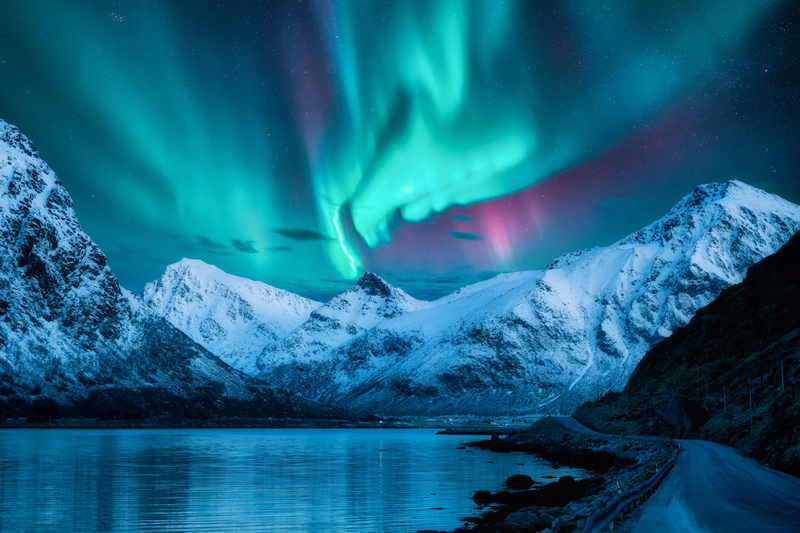Northern Lights Pioneering Open-Source CO2 Transport & Storage Project
17
Northern Lights is developing the world’s first open-source infrastructure for CO2 transport and storage, providing a groundbreaking solution for industrial companies to manage and reduce their emissions. Owned equally by TotalEnergies, Equinor, and Shell, the project became operational in September 2024 and has the capacity to store 1.5 million tonnes of CO2 annually in its first phase.

With strong backing from the Norwegian Government and its owners, Northern Lights offers a practical pathway for decarbonising industries in Norway and across Europe, making significant strides toward achieving net-zero goals.
How Northern Lights Works
The project's innovative infrastructure enables:
- CO2 Transport - Captured CO2 is transported from industrial capture sites by ship to a receiving terminal on Norway's western coast.
- Intermediate Storage - CO2 is temporarily stored at the onshore terminal.
- Permanent Storage - The CO2 is transported via pipeline to a secure reservoir located 2,600 meters beneath the seabed in the North Sea for permanent sequestration.
Phase 1: Longship Collaboration
Northern Lights forms the transport and storage component of Longship, the Norwegian Government’s full-scale carbon capture and storage (CCS) project. Longship showcases the viability of CCS as a decarbonisation strategy, with the goal of inspiring similar initiatives across Europe and globally.
Key elements of the Longship project include:
- Capturing CO2 from industrial sites in the Oslo-fjord region (e.g., cement and waste-to-energy facilities).
- Shipping liquefied CO2 to the onshore terminal.
- Transporting CO2 via pipeline to the offshore subsea storage site.
A Commercial CCS Market for Europe
Northern Lights is designed to be open and flexible, creating opportunities for third-party participation in CO2 transport and storage. By developing a scalable and accessible infrastructure, the project aims to foster the growth of a commercial CCS market in Europe. This cross-border initiative offers industries across the continent the ability to safely and permanently store their CO2, reducing emissions while supporting economic growth. Phase 1, operational since 2024, will be followed by future expansions to further increase storage capacity.
Norwegian Leadership in CCS
The Norwegian Government’s leadership and investment in CCS have been instrumental in bringing Longship and Northern Lights to life. These projects represent Norway’s ambition to establish a full-scale CCS value chain, demonstrating the potential of carbon capture as a critical solution for industrial decarbonisation.
Looking Ahead
With its open-source model and pioneering infrastructure, Northern Lights is a beacon of innovation in the fight against climate change. It positions Norway and Europe at the forefront of industrial decarbonization, providing scalable solutions for reducing emissions and achieving climate targets. By demonstrating the viability of CCS as a service, Northern Lights is paving the way for a sustainable and net-zero future.
From a shipping and marine perspective The arrival of the liquefied CO2 carrier Northern Pioneer represents a significant milestone in advancing carbon capture and storage (CCS) within the maritime sector. Fully operational, the vessel is designed to transport liquefied CO2 from capture facilities to Northern Lights’ receiving terminal in Øygarden, where the CO2 will be permanently stored underground. This confirms the converging path of both the CCS and shipping industry sectors which is occuring more often now and in the future.
#Protea #Emissions #Monitoring #CEMS #FTIR #Gas #Analysers #Shipping #Marine #Carbon #Capture
Other Articles
Global Underground CO2 Storage Data Offers Hope Amid Rising Emissions
01
IMO Postpones Adoption Of Global Net-Zero Shipping Framework
04
Pioneering Carbon Capture Projects Ready For Construction
03
Methanol & Ammonia Deemed Ready As Zero-Emission Shipping Fuels
01
Carbon Capture Storage Reaching A Turning Point In Decarbonisation
13
CCS To Capture 15% Of Shipboard Carbon Emissions By 2050
29
Global Shipping Industry Struggles To Navigate Net Zero Transition
21
Carbon Capture Surges as Economics Policy & Industry Demand Align
14
GHG Emissions At Ports On The Rise Despite Initiatives
07
Carbon Capture Utilisation & Storage In A Nutshell
30